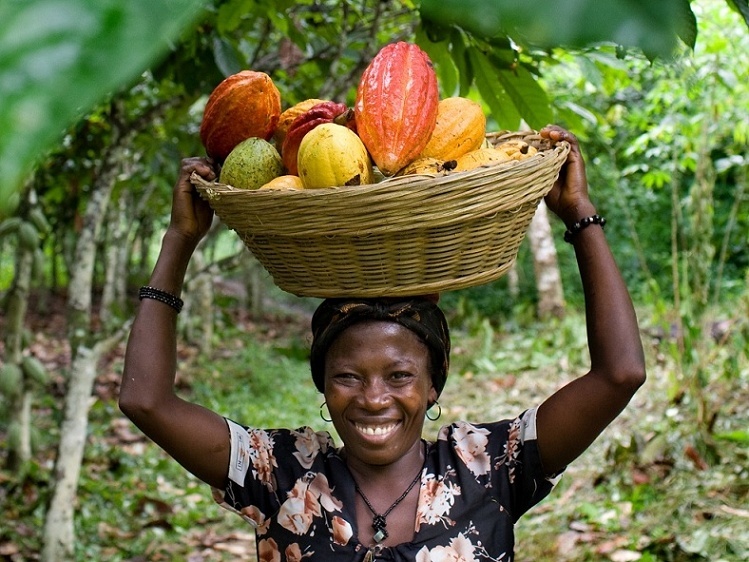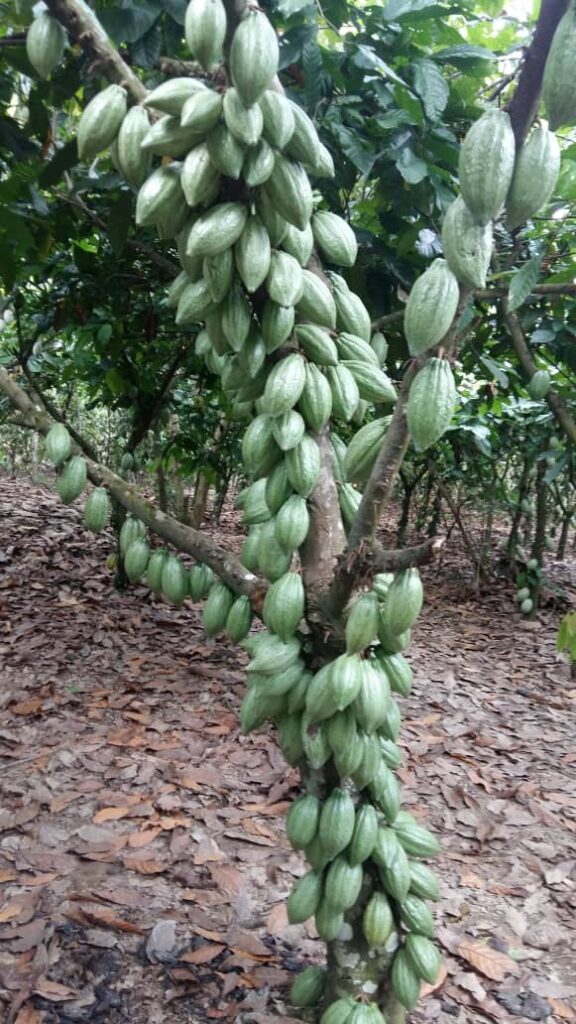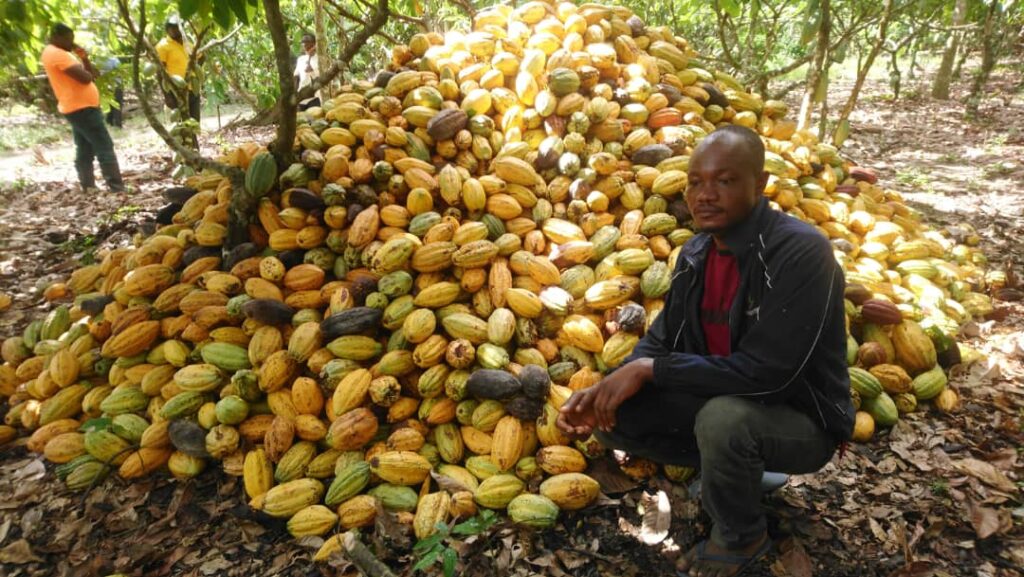Overview of Ghana Cocoa Industry
Cocoa from Ghana is highly regarded worldwide for its quality and flavor. Ghana is one of the leading producers of cocoa beans globally, and its cocoa industry plays a significant role in the country’s economy.
Here are some key points about cocoa from Ghana:
Quality and Flavor: Ghanaian cocoa is known for its rich flavor profile, characterized by a combination of fruity, nutty, and earthy notes. The beans have a deep, complex taste that is highly sought after by chocolate manufacturers.
Cocoa Production: Ghana has a long history of cocoa production and is consistently one of the top cocoa-producing countries in the world. The cocoa industry employs millions of Ghanaians, both directly and indirectly, and contributes significantly to the country’s export earnings.
Cocoa Board: To regulate and support the cocoa industry, Ghana has a governing body called the Ghana Cocoa Board (COCOBOD). COCOBOD oversees the cultivation, marketing, and sale of cocoa beans in the country.
 Sustainability Efforts: Ghana is actively working on promoting sustainable cocoa farming practices. Initiatives such as certification programs and partnerships with international organizations aim to improve the livelihoods of cocoa farmers, protect the environment, and combat issues like child labor.
Sustainability Efforts: Ghana is actively working on promoting sustainable cocoa farming practices. Initiatives such as certification programs and partnerships with international organizations aim to improve the livelihoods of cocoa farmers, protect the environment, and combat issues like child labor.
Fair Trade: Some cocoa from Ghana is also produced under fair trade conditions. Fair trade certification ensures that farmers receive fair prices for their produce and adhere to ethical labor and environmental standards.
Cocoa Processing: While Ghana is primarily known for cocoa bean production, it is also expanding its cocoa processing capabilities. The country has several cocoa processing companies that convert the beans into various products, including cocoa powder, cocoa butter, and chocolate bars.
Export Market: Ghana exports the majority of its cocoa beans to various countries, including Europe, the United States, and Asia. The beans are used by chocolate manufacturers to create a wide range of chocolate products enjoyed worldwide.
When purchasing chocolate or cocoa products, you may find labels indicating that the cocoa used comes from Ghana. This recognition is a testament to the quality and reputation of Ghanaian cocoa in the global market.
History – How It All Began
The history of cocoa in Ghana dates back to the 19th century when the crop was introduced to the country. Here is a brief overview of the cocoa history in Ghana:
 Introduction of Cocoa: Cocoa was first introduced to Ghana by Tetteh Quarshie, a Ghanaian blacksmith, in 1879. Quarshie brought cocoa beans from Fernando Po (now Bioko Island) in Equatorial Guinea and planted them on his farm in the Akwapim region of present-day Ghana.
Introduction of Cocoa: Cocoa was first introduced to Ghana by Tetteh Quarshie, a Ghanaian blacksmith, in 1879. Quarshie brought cocoa beans from Fernando Po (now Bioko Island) in Equatorial Guinea and planted them on his farm in the Akwapim region of present-day Ghana.
Early Challenges: In the early years, cocoa cultivation faced several challenges, including pests, diseases, and the unfamiliarity of farmers with the crop. However, Quarshie’s efforts laid the foundation for cocoa production in Ghana.
Expansion and Government Support: In the early 20th century, cocoa farming began to gain traction in Ghana. The favorable climate, suitable soil conditions, and government support through agricultural policies and extension services played a crucial role in the expansion of cocoa cultivation.
The Gold Coast Cocoa Hold-ups: During the 1930s, cocoa farmers in Ghana faced low prices and unfair practices by British trading firms. This led to a series of protests and hold-ups known as the “Cocoa Hold-ups,” where farmers withheld their cocoa from the market in an attempt to secure better prices and conditions.
Cocoa Marketing Board: In response to the cocoa hold-ups, the British colonial government established the Cocoa Marketing Board (CMB) in 1947. The CMB had the authority to control cocoa marketing and export in Ghana, ensuring fair prices for farmers and improving the overall cocoa industry.
Independence and Industry Development: Ghana gained independence from British colonial rule in 1957, and the cocoa industry became a vital part of the country’s economy. The government of Ghana continued to prioritize cocoa production and implemented policies to support farmers, increase yields, and promote value-added processing within the country.
Ghana as a Leading Producer: Over the years, Ghana has consistently been one of the top cocoa-producing countries globally. The country’s favorable climate, expertise in cocoa farming, and supportive government policies have contributed to its status as a leading producer.
Today, the cocoa industry in Ghana remains a significant sector, providing livelihoods for millions of farmers and contributing to the country’s export earnings. Efforts are being made to ensure sustainability, improve farmer incomes, and address social and environmental challenges within the cocoa sector.
Agronomy and Quality Control
The cocoa quality from Ghana is widely recognized and highly regarded in the global market. Here are some factors that contribute to the reputation of Ghanaian cocoa for its quality:
 Flavor Profile: Ghanaian cocoa is known for its distinct flavor profile, characterized by a rich and complex taste. It often exhibits a combination of fruity, nutty, and earthy notes, with a deep and robust flavor. The unique flavor of Ghanaian cocoa is prized by chocolate manufacturers and is sought after for premium chocolate production.
Flavor Profile: Ghanaian cocoa is known for its distinct flavor profile, characterized by a rich and complex taste. It often exhibits a combination of fruity, nutty, and earthy notes, with a deep and robust flavor. The unique flavor of Ghanaian cocoa is prized by chocolate manufacturers and is sought after for premium chocolate production.
Genetic Diversity: Ghana’s cocoa industry benefits from a diverse range of cocoa varieties. The country has both hybrid and local varieties, contributing to the complexity and quality of its cocoa. The genetic diversity helps in producing beans with different flavor profiles and characteristics, providing a wide range of options for chocolate makers.
Soil and Climate: The favorable soil and climate conditions in Ghana contribute to the high quality of its cocoa. The country’s cocoa-growing regions, including Ashanti, Brong-Ahafo, Eastern, and Western regions, have a combination of well-drained soils, adequate rainfall, and moderate temperatures, which are conducive to cocoa cultivation.
Farming Practices: Ghanaian cocoa farmers follow traditional and sustainable farming practices that contribute to the quality of the beans. The farmers employ agroforestry methods, where cocoa trees are intercropped with shade trees, providing a suitable microclimate for cocoa growth. This approach enhances the flavor development and adds complexity to the cocoa beans.
Fermentation and Drying: The post-harvest processing of cocoa beans is crucial in determining their quality. Ghanaian cocoa farmers are well-versed in the fermentation and drying processes. Proper fermentation and careful drying of the beans contribute to the development of desirable flavors and aroma compounds, resulting in high-quality cocoa.
Quality Control Measures: The Ghana Cocoa Board (COCOBOD) and other regulatory bodies implement strict quality control measures. They ensure that cocoa beans meet specific quality standards before being exported. This includes assessments of moisture content, bean size, fermentation levels, and absence of defects.
Certification Programs: Ghanaian cocoa also participates in certification programs such as Fair Trade, Organic, and Rainforest Alliance. These certifications ensure that cocoa is produced sustainably, with fair wages for farmers and adherence to environmental and social standards. Such certifications further enhance the reputation and quality of Ghanaian cocoa.
The combination of these factors contributes to the exceptional quality and flavor profile of cocoa from Ghana. It is why Ghanaian cocoa beans are highly sought after by chocolate manufacturers globally and used to produce premium chocolates and cocoa products.
